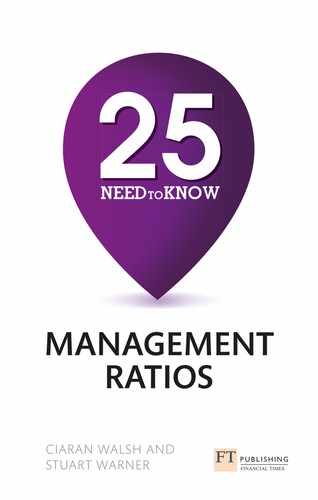4
The big picture
This chapter will:
- Look at the balance sheet and profit and loss account together
- Introduce you to an example company with some example data
- Cover two alternative balance sheet layouts
Working data
Throughout the various stages of the book we will work with an illustrative set of data for an example company.
The Example Co. plc
Figure 4.1 shows for the Example Co. plc:
- the balance sheet
- the profit and loss account
- share data.
The Example Co. plc has been devised with simple numbers to highlight various aspects of accounts and show the calculation of ratios.
It is worthwhile spending a moment looking over the now familiar five-box balance sheet and the structured profit and loss account to become familiar with the figures. They will be used a lot in the following chapters.
Balance sheet layouts
A number of alternative forms of layout, particularly in the case of the balance sheet, are used in presenting accounts. While the layout itself does not affect any of the numbers, it can be difficult when faced with an unfamiliar format to find where items are located and to calculate values for key ratios such as ‘total assets’ and ‘capital employed’.
The first point to remember is that the items within each of the five boxes will always appear grouped together – they are never scattered around among other items. Sometimes, however, the total only of a subsection will appear in the balance sheet while the detail is to be found in the notes to accounts.
Vertical balance sheet – version 1
Given the five-box grouping, it follows that there is only a limited number of ways in which the boxes can be arranged. In Figure 4.2, one such re-arrangement is shown.
It is easy to see how the items in the two-column format have been re-ordered into a single vertical column. This type of layout has the advantage that corresponding values for successive years can be laid out side by side for ease of comparison. In this format, values for ‘total assets’ and ‘total funds’ are also emphasised.
Note that the order of the boxes may be different depending on the accounting jurisdiction and convention. For example, current assets may be shown before long-term assets, and similarly in respect to liabilities.
Vertical balance sheet – version 2
The second layout, as shown in Figure 4.3, is a slightly more sophisticated version and is often seen in published accounts. The difference is that current liabilities have been moved out of the liabilities section and are instead shown as a negative value side by side with current assets. The totals of these two sections are netted off to give the figure for ‘working capital’.
Both sides of the balance sheet are, accordingly, reduced by the amount of the current liabilities – $240. The original totals amounted to $800, so the new balancing figure is $560. This figure, as seen earlier, is ‘capital employed’.
The advantage of this layout is that both working capital (current assets less current liabilities) and capital employed values are identified. The disadvantage is that the figure for total assets does not appear anywhere on the balance sheet.
Which format?
It is largely a matter of personal preference as to which format is adopted for internal company accounts. For external published company accounts it is down to jurisdiction and convention as well as local company law. In the three types of layouts illustrated (the five-box format and vertical versions 1 and 2), practically all possible situations have been covered, so most balance sheets should now make sense. It is a good idea to take whatever form is used and transfer the figures into the familiar five-box format as the significant features will then quickly become evident.
A note on terminology
As mentioned earlier the heading ‘Non-current assets and liabilities’ is often used in place of ‘Long-term assets and liabilities’. In this book we have used the heading ‘Long-term’ for ease of understanding.
Additionally, the headings ‘Creditors: amounts falling due within one year’ and ‘Creditors: amounts falling due after more than one year’ can also be used to refer to current liabilities and long-term loans respectively.



